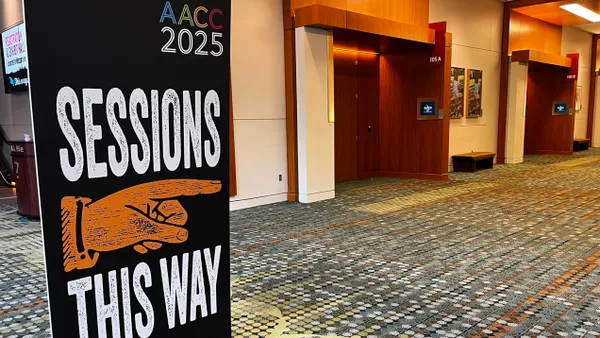Dive Brief:
- The average Pell Grant recipient could afford to attend only 24% of public four-year colleges in the 2019-20 academic year, according to a new report from the National College Attainment Network. Pell-eligible students at four-year institutions faced an average unmet financial need, or affordability gap, of $2,627.
- Just 40% of community colleges were classified as affordable for Pell Grant recipients and, on average, these students attending two-year colleges faced $907 in unmet financial need.
- Only eight states had five or more four-year colleges that NCAN considered affordable. And in 10 states, there were no colleges that qualified as affordable between 2015-16 and 2019-20.
Dive Insight:
NCAN, a nonprofit focused on college access and success, classifies a college as affordable when its total cost of attendance plus $300 is equal to or less than an average student's wages, financial aid and expected family contribution. A majority of four-year public colleges were inaccessible to the average Pell Grant recipient in 2015-16, with only 29% qualifying as affordable. But the problem has gotten even worse, not better, in the intervening years, according to the report.
Between 2015-16 and 2019-20, the affordability gap grew at both two- and four-year institutions. During this time, the affordability gap among 524 public four-year colleges increased by 59% from an average of $1,656 to $2,627.
The jump was even more dramatic at community colleges. In 2015-16, the average affordability gap at two-year colleges was $246. It rose to $907 in 2019-20, an increase of 269%.
Some states provided students with more affordable options than others. Washington has the highest rate of affordable institutions, at 82%. In Kentucky and New Mexico, 75% of public colleges were affordable for Pell Grant recipients. And in all three states, every community college qualified as affordable.
But the number of affordable institutions could actually be lower than research indicates, according to NCAN.
The nonprofit's affordability formula assumes students are able to work full time in the summer, along with working part time during the academic year. This isn't feasible for all students, many of whom have family obligations outside of school. Research at one public university found that more than 1 in 20 of its students were caregivers, such as for someone who is ill, aging or a minor.
Specifically, NCAN recommends the total price of a public college, plus $300 for emergency expenses, should be less than the combination of:
- That college's average federal, state, and institutional grant award.
- The average federal loan disbursement.
- The EFC of the average Pell Grant recipient.
- The average federal work-study award.
- The average contribution of a student's summer wages.















